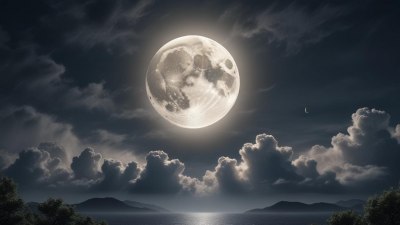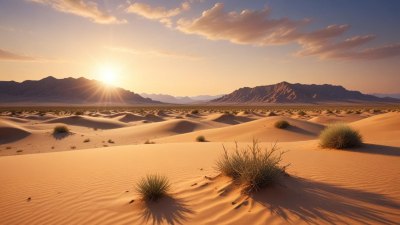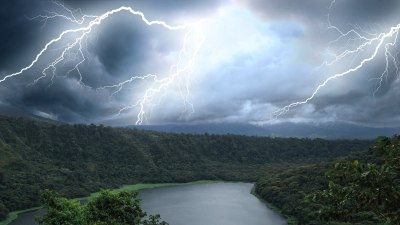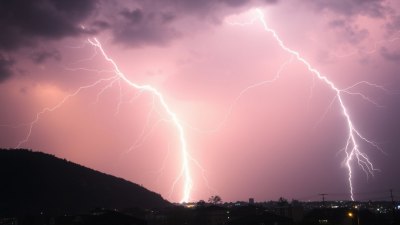How the Moon Affects Weather
Discover the fascinating ways the Moon influences weather patterns on Earth.

This image was created with the assistance of Freepik
The Moon, Earth's only natural satellite, has long been a source of intrigue and fascination for humanity. Beyond its captivating beauty and cultural significance, the Moon plays a role in various natural phenomena, including the weather. The impact of the Moon on weather patterns may be subtle, but it is nonetheless significant. This article delves into how the Moon affects weather, exploring its gravitational influence, lunar phases, and other related phenomena.
The Gravitational Pull of the Moon
The primary way the Moon influences weather is through its gravitational pull, which is most prominently observed in the form of tides. The Moon's gravitational force pulls on the Earth's water bodies, creating high and low tides in the oceans. This interaction affects ocean currents and, in turn, can influence climate and weather conditions. For instance, during a full moon or new moon, when the Sun, Earth, and Moon align, tidal forces are at their strongest, leading to higher high tides and lower low tides known as spring tides.
Tidal Effects on Weather Patterns
The connection between ocean tides and weather is significant; warm ocean surfaces generally lead to the formation of storms and precipitation. When the ocean experiences higher tides, it can cause warmer water to travel closer to shore, which can rise in temperature and potentially influence localized weather. Conversely, during lower tides, cooler water can become exposed, which might contribute to a drop in local temperatures and subsequently affect weather patterns.
Lunar Phases and Their Influence
The lunar cycle lasts about 29.5 days and consists of eight distinct phases: new moon, waxing crescent, first quarter, waxing gibbous, full moon, waning gibbous, last quarter, and waning crescent. These phases can influence human activity and natural phenomena, including weather. Some studies suggest that specific lunar phases correlate with atmospheric conditions. For example, some believe that storms may be more likely to form during a new moon or full moon, as these phases correspond with heightened tidal forces.
In addition to affecting tides, the Moon's gravitational pull can also influence the Earth's atmosphere, although these consequences are typically less pronounced than tidal effects. The slight shifts in atmospheric pressure caused by the Moon's pull may lead to variations in weather. For instance, as the Moon approaches its perigee, or closest point to Earth, its gravitational pull can induce a minor clustering of atmospheric pressure that might affect localized weather conditions.
Some research has indicated that there may be a connection between the lunar phases and precipitation patterns. Some farmers and meteorologists refer to the lunar calendar when predicting weather events, believing that certain phases increase the likelihood of moisture or storms. While scientific evidence for these claims remains limited, anecdotal observations persist, showcasing a traditional reliance on the Moon’s cycle for agricultural practices and weather predictions.
The presence of the Moon can also affect nighttime temperatures. On nights with a bright, full moon, the increased moonlight can provide some ambient warmth, potentially leading to slightly higher temperatures than darker nights. Conversely, cloudy or overcast nights, particularly when they coincide with new moon phases, can lead to cooler temperatures, as there is less light and heat retained by the atmosphere.
Throughout history, various cultures have recognized the Moon's influence on the Earth’s weather and natural cycles. Ancient civilizations often linked lunar cycles to seasons, agricultural planting, and harvesting times, demonstrating an understanding of the Moon's significance in relation to natural events. Many societies even developed calendars based on the lunar cycles, depicting the Moon's impact on their agricultural and weather-related activities.
In recent years, scientific interest has heightened around understanding the relationship between the Moon and weather phenomena. Researchers have utilized modern technology and data analysis to explore lunar effects on atmospheric conditions and weather patterns. While the comprehensive impact of the Moon remains an area requiring further study, initial findings have unveiled intriguing connections worth exploring.
In conclusion, while the Moon's influence on weather may not be as overt as other natural forces, its gravitational effects and cyclical nature play a role in shaping Earth’s weather systems. From tidal variations and their impact on ocean currents to the influence of lunar phases on precipitation patterns, the Moon's role in weather is both fascinating and complex. As research continues to evolve, we may gain deeper insights into how our lunar companion continues to chisel the face of weather on our planet, reminding us that the Moon’s presence extends beyond mere beauty in the night sky.











